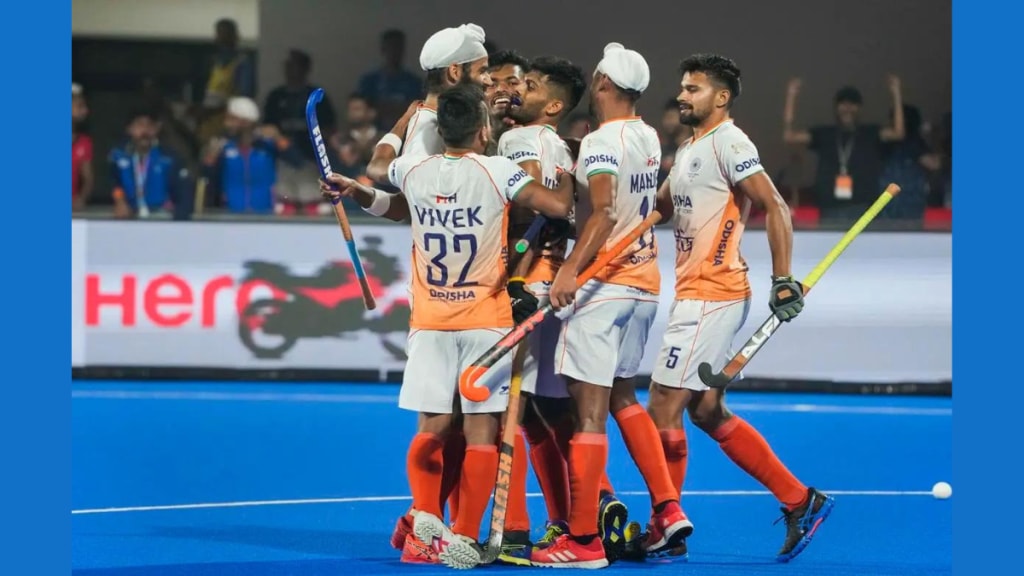USA? American football
UK? Football
Germany? Fussball
India? Cricket
One doesn’t need even a second to think before rattling off the names of the most popular spectator sports in these countries. So what was broadcaster Viacom18 thinking when it inked a media rights agreement with the Fédération Internationale de Hockey (International Hockey Federation or FIH)?
For the record, this agreement runs for a four-year cycle (2023-27) and includes all FIH events, except the FIH Nations Cup. Under the partnership, Viacom18 will broadcast and stream the upcoming FIH Hockey Olympic Qualifiers, the first ever FIH Hockey5s World Cup, the FIH Hockey Pro League, and the 2026 FIH Hockey World Cup on Sports18 and JioCinema.
Hockey fans are optimistic that this partnership will give the sport the much-needed viewership boost. Viewer interest in what is commonly regarded as India’s national sport has waned over the years, and so has advertiser interest. As per a 2022 Ormax Media report, the fan base in India for hockey is 5.8 million, well below cricket at 124.2 million, kabaddi (28.5 million) and football (23.4 million). The 2023 Men’s FIH Hockey World Cup hosted by India drew a total of 11.6 million viewers.
In other words, the sport needs that marketing push to climb the ranks both in viewership and advertising monies. In that sense Viacom18 has its work cut out. What will work in its favour is the fact that the men’s team is ranked third currently, while the national women’s team is placed sixth globally.
The issue really is advertiser interest. GroupM’s Sporting Nation report last year noted that cricket accounted for 85% of India’s sports revenue. The total sports industry spending (including sponsorship, endorsements and media spends) was Rs 14,209 crore in 2022. The lion’s share of Rs 12,115 crore was on cricket and the remainder of Rs 2,094 crore was on other sports. The Indian Super League is said to have earned close to Rs 400-450 crore in its last season, while Pro Kabaddi League (PKL) is expected to close this season with ad revenues of Rs 150-200 crore. In comparison, hockey earns a meagre sum, around Rs 60 crore annually through sponsorships and ads.
Brands such as Hero, JSW, Hyundai, LIC and Tata Steel have stepped up to lend advertising support to the sport in recent years. But to get traction akin to cricket or even the Olympic games, hockey needs a bit of a shake up, say experts. “Newer formats like we have seen in PKL can be introduced and brands need to step in to support. The reason PKL has seen such success is the representation from different states, drawing in audiences,” says Kumar Awanish, chief growth officer at Cheil India. Adds Dhiraj Khanna, AVP and cluster head at MudraMax, “India’s domestic hockey is not in good shape, so creating depth for the sport is the need of the hour.”
Making a comeback
The return of the Hockey India League — which kicked off in 2013 with the last season taking place in 2017 — can change things around for the sport. If Viacom18 decides to package the league as a television event, it could go a long way in getting eyeballs, especially during the periods when there are no major international hockey tournaments.
“Hockey, with its latest rule changes, and being condensed to a fast-paced 60 minutes broken into four quarters, is very much a made-for-TV sport, and the key is putting enough of it on TV or live streams to draw the casual viewer in,” states Tareque Laskar, head, ITW Core. “It will need to be slickly packaged and made accessible to the casual viewer and this is where the broadcaster can pitch in with shoulder programming (that is around the games and live broadcast).” The broadcaster can even explore documentary-style programmes focused on the players, their journey, the game’s history, like Netflix has done with Formula1 and tennis. This will help build a more serious fan base.
The focus for Viacom18 should also be on fostering long-term brand partnerships, like Coca-Cola and under-19 cricket. “Cricket can be an expensive proposition for advertisers, and so the broadcaster should encourage brands to make a long-term commitment towards the sport. This is win-win for all — the brand gets a good deal at a relatively nominal cost, the sport will benefit and so will the broadcaster,” says KV Sridhar, global chief creative officer, Hypercollective and Nihilent. He recommends “catching ‘em young”—school-going children and college students should be the target audience because when passion for the sport is fostered at a young age, it helps bring up a whole generation of hockey lovers.
